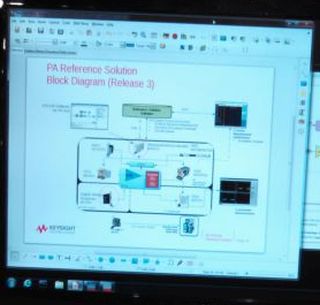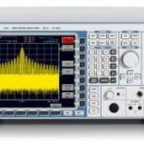We were recently able to speak with Pat Murray from Anritsu who demonstrated instrumentation that computes differential noise figure. Though noise figure is a well-known parameter, differential noise figure isn’t as commonly used. But it is becoming important for the verification of low-noise amplifiers (LNAs) and other devices used in the front-end of 5G and microwave backhaul systems. Differential amplification is used as a means of providing a low-noise boost to wide-band signals.
 Characterization of differential noise figure is considered superior to conventional approaches that include an RF balun with only an S-parameter description or neglect correlation between device-under-test (DUT) output ports. These approaches can give bad data about differential devices.
Characterization of differential noise figure is considered superior to conventional approaches that include an RF balun with only an S-parameter description or neglect correlation between device-under-test (DUT) output ports. These approaches can give bad data about differential devices.
The handy thing about the Anritsu setup is that it will measure differential noise figure — basically the noise in the two signal paths –in real time. The usual way of measuring differential noise figure is to make a single-ended measurement of one path and then a single-ended measurement of the other path. A figure for differential noise figure only comes after some post-processing.
To make the measurement, Anritsu uses two composite receivers that connect into the B2 port and the B1 port of a VNA. They characterize the composite receivers and do a calibration at the end of the composite receiver to figure out the noise levels of the VNA. Then the DUT gets inserted in the measurement setup and the differential noise figure gets measured in real time.
Anritsu also offers a technique for characterizing a balun. This is useful, says Murray, because a lot of measurements call for the use of a balun that combines two signals to produce a single-ended signal that is measured for noise figure. Murray says a lot of people don’t characterize the balun to remove its effects from the measurement. So inside its VNAs Anritsu characterizes the baluns up front.




Leave a Reply
You must be logged in to post a comment.